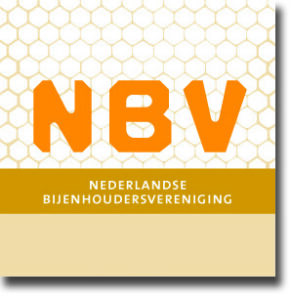Wanneer werden bijen honingbijen? Kees van Heemert
I’Anson Price, R. en Grüter, C., 2015. Why, when, and where did honey bee dance communication evolve? Frontiers in Ecology and Evolution 3:125. DOI: 10.3389/fevo.2015.00125.
https://www.frontiersin.org/articles/10.3389/fevo.2015.00125/full
Barron, A.B. en Plath, J.A., 2017. The evolution of honey bee dance communication: a mechanistic perspective. J. of Experimental Biology 220:4339-4346.
Beekman, M. , Gloag, R.S. , Even, N., Wattanachaiyingchareon, W. en Oldroyd, B.P., 2008. Dance precision of florea-Clues to the evolution of the honeybee dance language. Behav. Ecol. Sociobiology 62: 1259-1265.
Dogantzis, K.A., Tiwari, T., Conflitti, I.M., Dey, A., Patch, H.M., Muli, E.M., Garnery, L., Whitfield, C.W., Stolle, E., Alqarni, A.S., Allsopp, M.H. en Zayed, A., 2021. Thrice out of Asia and the adaptive radiation of the western honey bee. Science Advances 7:eabj2151.
Engel, M.S., Wang, B., Alqarni, A.S., Jia, L.-B., Su, T., Zhou, Z.-K. en Wappler,T., 2018. A primitive honey bee from the Middle Miocene deposits of southeastern Yunnan, China (Hymenoptera, Apidae). ZooKeys 775:117–129.
Engel, M.S. en Rasmussen C., 2020. Corbiculate Bees. In: Starr C. (eds) Encyclopedia of Social Insects. Springer, Cham. https://doi.org/10.1007/978-3-319-90306-4_30-1.
Grüter, C. en Hayes, L., 2022. Sociality is a keydriver of foraging ranges in bees. Current biology. https://doi.org/10.1016/j.
Heemert, K. van, 2015. Onze (westerse) honingbij komt zeer waarschijnlijk uit het verre oosten. Bijenhouden 9(2): 15-17.
Heemert, K. van, 2021. De donkere bij is verwant aan een Chinese bij. Bijenhouden 15(2): 38-39.
Jeanne, R.L., 1980. Evolution of social behavior in the Vespidae. Annu. Rev. Entomol. 25: 371-396.
Ji, H., 2021. The geographical origin, refugia, and diversification of honey bees (Apis spp.) based on biogeography and niche modeling. Apidologie doi: 10.1007/s13592-020-00826-6.
Kocher, S. en Paxton, R., 2014. Comparative methods offer powerful insights into social evolution in bees. Apidologie 45(3): 289-305. ff10.1007/s13592-014-0268-3ff. ffhal01234748f.
Kohl, P.L., Thulasi, N., Rutschmann, B., Georg, B.A., Steffan-Dewenter, I. en Brockmann, A., 2020. Adaptive evolution of honeybee dialects. Proc. R. Soc. B 287:20200190.
Kotthoff, U., Wappler, T. en Engel, M.S., 2013. Greater past disparity and diversity hints at ancient migrations of European honey bee lineages into Africa and Asia. Journal of Biogeography 40:1832-1838.
McGee, H., 2021. De geuren van de wereld. Nieuw Amsterdam. 624 pp. Vertaler: Jacques Meerman ISBN: 9789046824603
Mikheyev, A.S., Tin, M.M.Y., Arora, J. en Seeley, T.D., 2015. Museum samples reveal rapid evolution by wild honey bees exposed to a novel parasite. Nature communications DOI:10.1038/ncomms8991.
Porto, D.S. en Almeida, E.A.B., 2021. Corbiculate Bees (Hymenoptera: Apidae): Exploring the limits of morphological data to solve a hard phylogenetic problem. Insect Systematics and Diversity, 1) 5(3):2;1–40.
Raffiudin, R. en Crozier, R.H., 2007. Phylogenetic analysis of honey bee behavioral evolution. Molecular Phylogenetics and Evolution 43:543–552.
Scheer, H. van der en Blacquière, T., 2021. Verwantschap en afstamming van (honing)bijen
- Kenmerken en genetische eigenschappen bepalen verwantschap van (onder)soorten.
- Fossielen geven richting van de afstamming aan.
Bijenhouden 15(4):23-25 en 15(5):20-22.
Scheer, H. van der, 2023. Wanneer zijn bloemplanten aan hun bestuivers gekomen?. Bijenhouden 17(3): nog in te vullen
Seeley, T.D., 2010. Honeybee democracy. Princeton University Press. 273 pp.
Tihelka, E., Cai, C., Pisani, D. en Donoghue, P.C.J., 2020. Mitochondrial genomes illuminate the evolutionary history of the Western honey bee (Apis mellifera). Nature Scientific Reports 10:14515. https://doi.org/10.1038/s41598-020-71393-0.
Toth, A.L. en Zayed, A., 2021. The honey bee genome-what has it been good for? Apidologie 52:45-62.>

